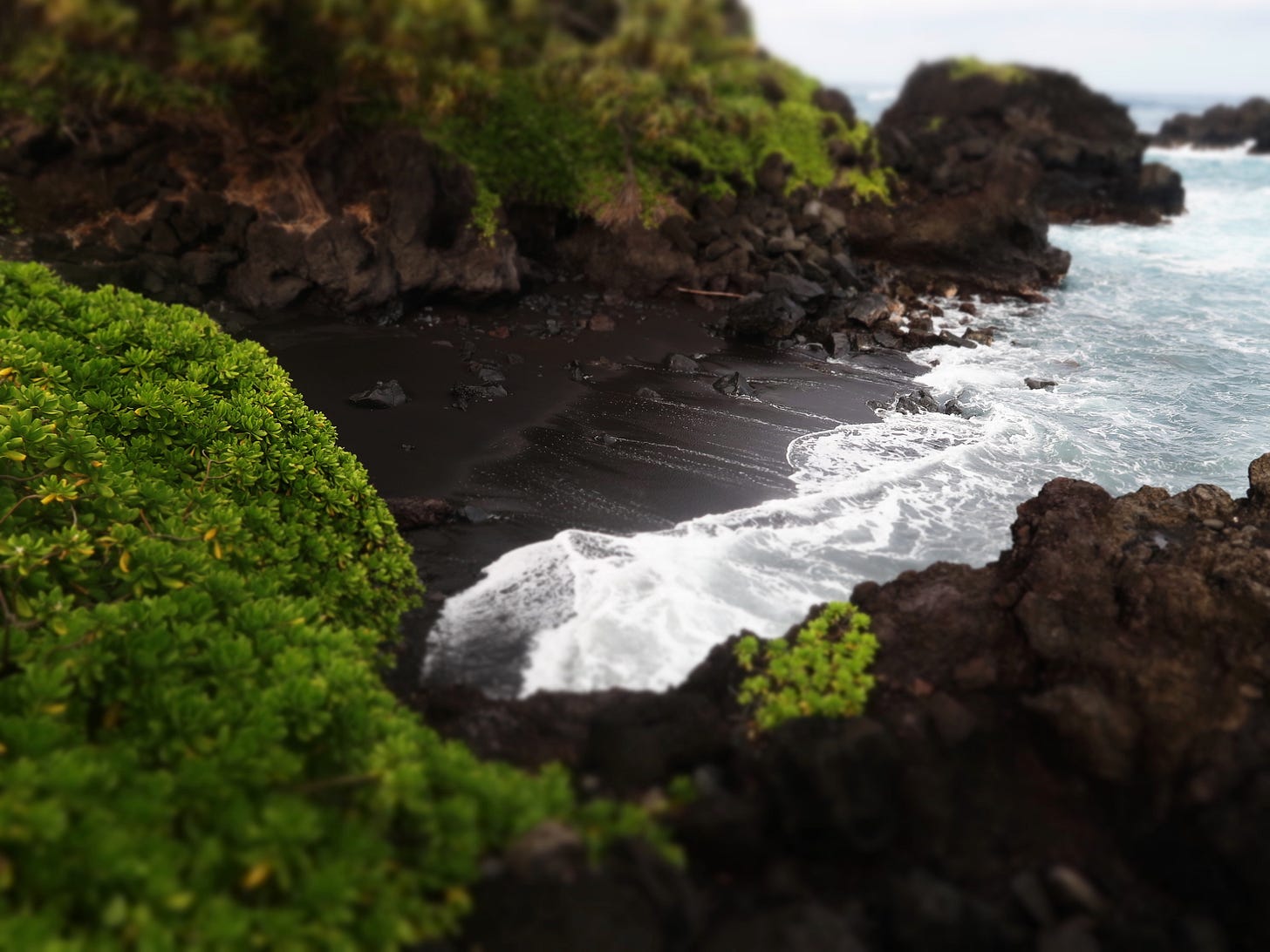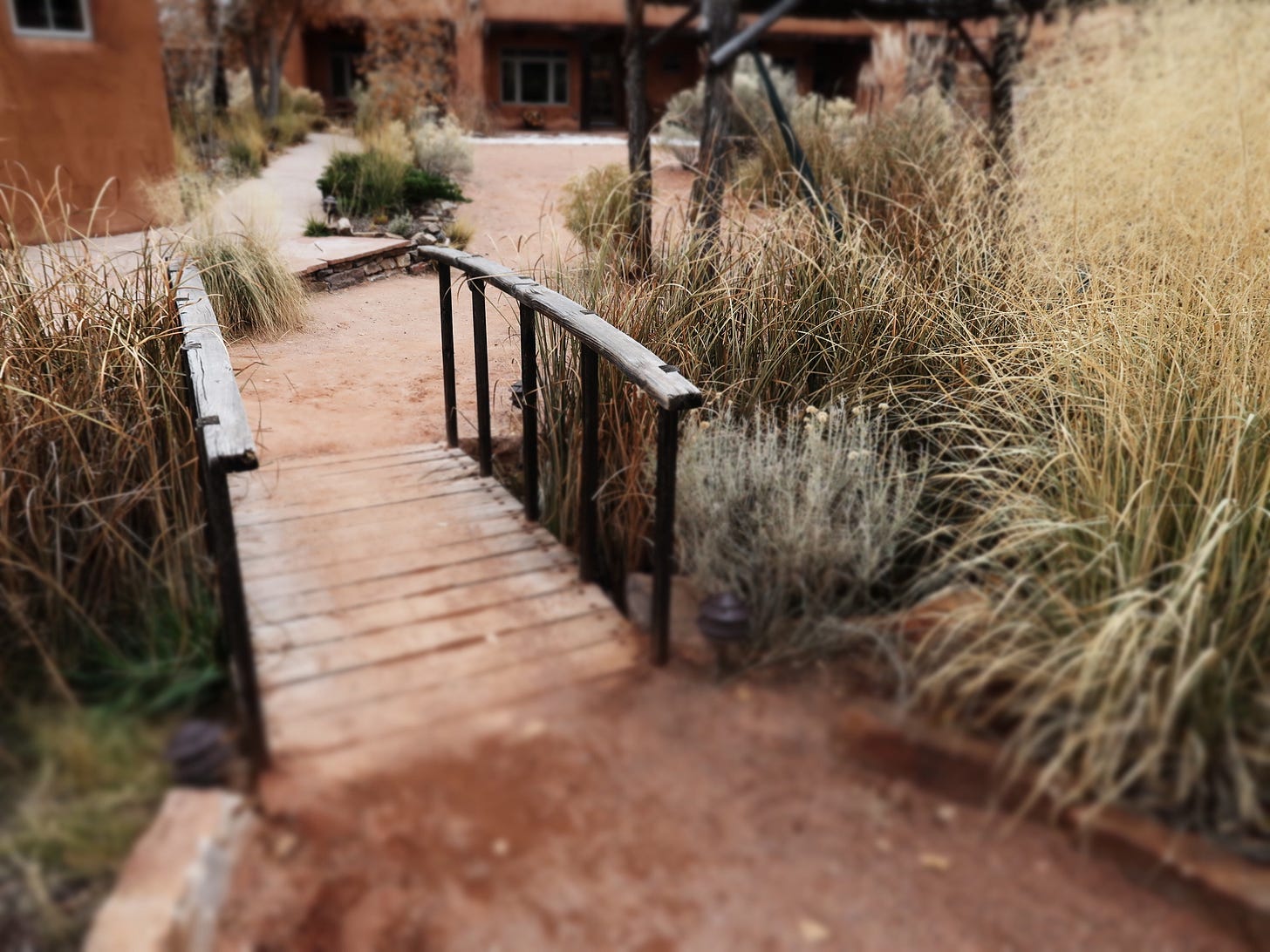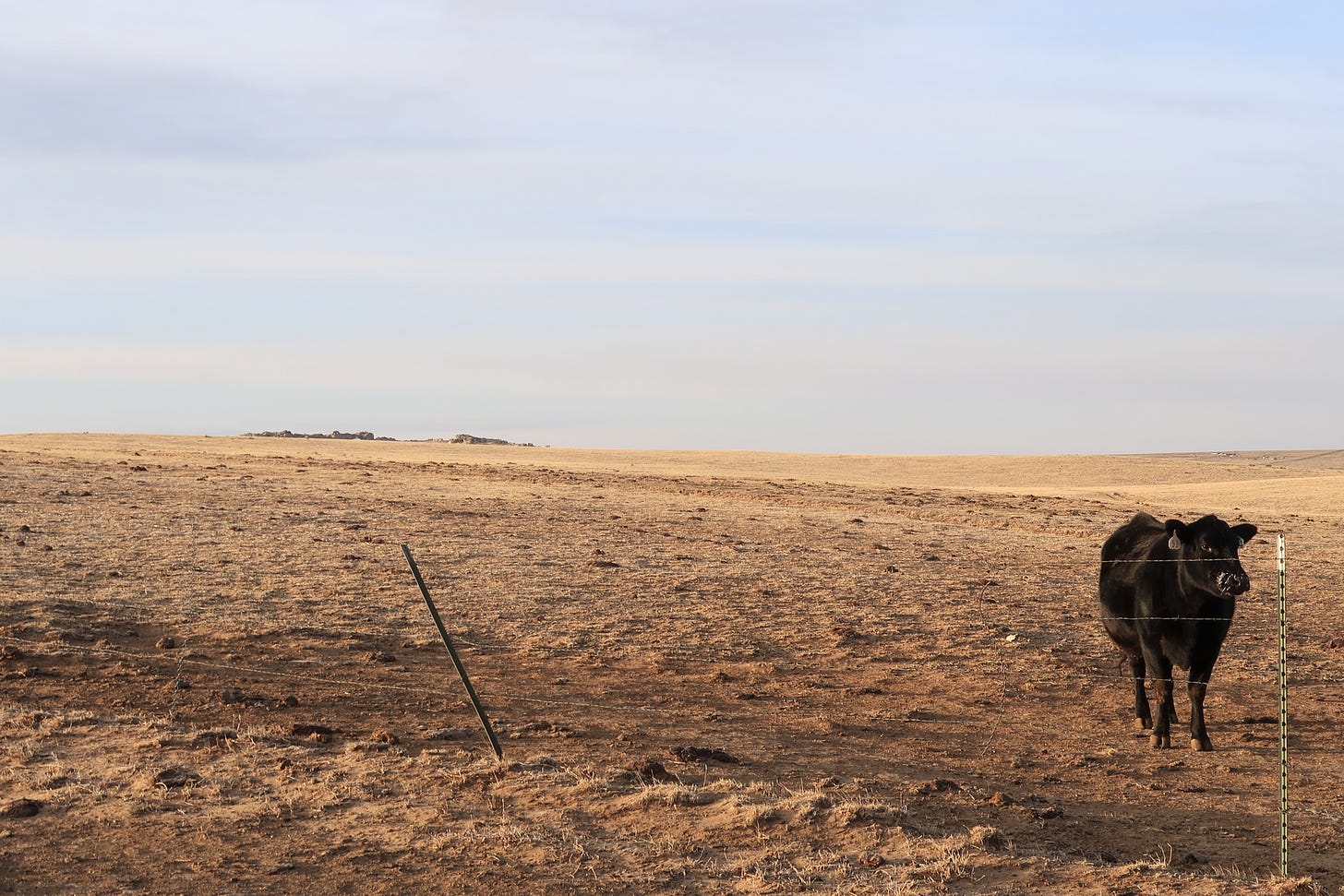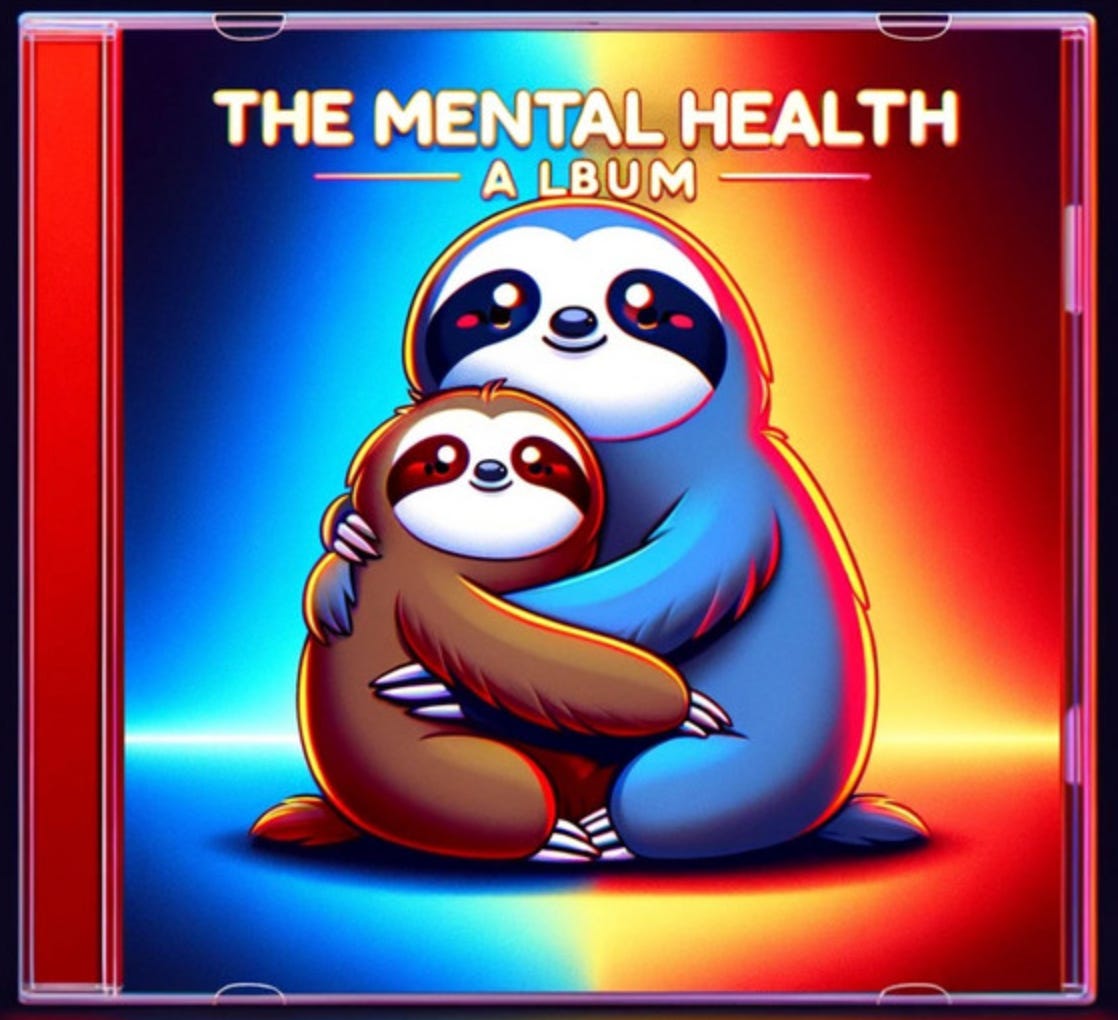Democratizing Creativity
an under-appreciated upside to AI
Drawing and painting are contact sports. They are deeply embodied skills. I didn’t learn either when I was younger and when I tried a bit as an adult, it was extremely challenging. I could see the road between where I was and where I would find satisfying and it was long. And I mean merely satisfying, not even good. I had some understanding of the scope of the problem because my uncle was an exceptional painter.
So photography was an attractive alternative. The zero-to-satisfying journey was much shorter. True mastery would of course be a lifelong endeavor that I wasn’t sure if I was ready to commit to. But it has been a creatively satisfying hobby for me in a way that painting would not yet have been.
Photography
it is obvious that this industry, by invading the territories of art, has become art’s most mortal enemy.. — Charles Baudelaire 1859
and
It is now widely agreed that photography is not in fact the mortal enemy of art and is its own rich medium for creative exploration and expression. Being technologically assisted does not diminish the craft — it shapes and alters the experience and the end product, but it is not less than, just different. And my life has been the better for photography being accessible in a way that other mediums were not for me.
I don’t think I’m good enough of a photographer to distinguish much between my best work and my favorites, so here are a dozen or so of some combination of those things:
Music
I’ve been interested in generative art for nearly three decades. In high school I would create poems from random lines of sci-fi books. In my first Philosophy of Art class I used random words from the dictionary to make poems. Much later I discovered Markov chains and made a Twitter bot that wrote haiku in the style of Bashō. I’ve been deeply interested in these ideas of authorship and intent — especially as contrasted by reader response theory.
I didn’t really get music when I was growing up. I understood that people seemed to care a great deal about it, but I always felt like I was missing something — an emotional resonance of some kind1. It’s a slow process, but I’ve been incrementally rectifying this over the past several years. The progress on AI music generation has been completely shocking to me. It has been a tremendous creative outlet for me and one I continue to aspire to spend more time with. Here’s what the creative process looks like for me.
It often starts with a theme for an album. For example, for mental health awareness month last year there was a natural starting point:
Then I’ll write the lyrics, usually starting with the chorus. Then I’ll think about the kind of song I think it should be. I’ll work with an AI model (usually Claude) to then help me generate a list of music descriptors to be used by another AI model for music generation2. Then I’ll put the lyrics and the music prompt into Udio which is currently my preferred AI music tool.
Next up is an indefinite period of iteration. Often upon hearing the lyrics out loud, I’ll know that something needs to change. Or maybe I got kind of close to the sound and genre that the song should be, but I need to tweek a few descriptors. Maybe I just need to be more specific. Sometimes the entire vibe is wrong and I circle back to Claude for a different prompt.
Once I’m in the right general area begins a much tighter inner loop of iteration. Generate some clips, listen to them. This is where taste and curation play a big role. The possibility space is quite large and most results are not what I want. Once I get something that is kind of what I’m hoping for there is the ability to remix rather than generate anew which anchors a bit more heavily on the the thing you liked — allowing you to take much smaller steps in the exploration. How long I spend here depends largely on the purpose of the song — is it just for me, a joke song for someone else, or something that I think I might want to actually publish.
Then it’s possible to extend that chorus in either direction and slowly build up a song in ~30 second chunks. The iteration here is usually quicker because the models are able to anchor fairly strongly on what already exists. Overall, the entire process takes between 2 and 8 hours — sometimes in just one sitting when things really come together and otherwise over the course of a week or so.
Is this an entirely different process than how actual musicians create music? Yes, of course, but it’s the path that is accessible to me. I write all the lyrics, I decide the genre and tone, I select and curate. The AI models provide vocalization, instrumentation, arrangement and other components of music that I don’t understand. I’m not an expert here, but my understanding is that technology has played a huge role in the development of music — synthesizers, beat boxes, mixing software and auto-tune to name just a few. I enjoy it and others have enjoyed what I have made. There is joy, laughter, grief, and bemusement to be shared that would not have otherwise existed. They are deeply personal — someone else could not have created these. If this isn’t creative artistic expression, I’m not really sure what we’re even talking about.
Some songs to consider listening to:
The Leetcode Grind (spotify, mp3 — including mp3 links for those who don’t have spotify) — my most popular song about interviewing in tech — shoutout to the handful of Belgians that really got into this one.
The best home game (spotify, mp3) — a tribute song to a poker game that’s really about friendship. In loving memory of my friend Phil. I’m glad that I was able to share this with him a few months before he passed away.
Bored one day (spotify, mp3) — a song that helped me process the pain and difficulty of the Little Lonnie takeover of Twitter.
Earth’s Only Moon (spotify, mp3) — some songs can just be fun.
Unsolicited Advice (spotify, mp3) — if you care for someone with depression, worth a listen and perhaps the rest of the mental health album as well.
Summer’s Here (constitutional crisis!) (spotify, mp3) — a song that is helping me weather our challenging political situation.
The whole catalogue can be found here.
You may not like any of these — but that’s not the point. My point is that this is art produced through acts of creative expression. And none of this would have existed if not for the technological assistance of AI. So many people have so many things they want to say and reducing the barriers for them to say them in ways that that they want to is such a great good. Different is not less than, it’s simply different.
Art Education
In addition to generating art, AI is an incredible tool for learning about art. I recently saw a sculpture that I immediately liked and it helped me realize how in general I don’t get sculpture. Like so many things, I thought if I knew a bit more about this medium and had some more context, I could appreciate it more. But rarely do we have a knowledgeable friend who can give us the short lecture on sculpture waiting on standby whenever we need it.
So I used ChatGPT’s new study feature to learn a bit more about sculpture. And the several sculptures I’ve seen since have been much more interesting and I’ve been able to approach with more curiosity and engagement. Among other things it helped me learn how sculptures I have liked in the past are easily accessible — they didn’t require a lot of context or knowledge to easily appreciate on a surface level. But as with almost everything, there are more layers, levels, and nuance. Am I a sculpture expert now? Of course not, but I now have the sort of framing that I might have acquired and forgotten about if I had taken an Art Appreciation class in college. And this foundation has already made me appreciate sculpture more.
And we have the capacity to do this for any subject. Right now. Whenever you are curious about something. Part of creativity is consuming, appreciating, and engaging with what others have created. The ability to access more of the meaning and depth behind these creations is a gift. Maybe a knowledgeable docent could answer your question or the audio guide covers the exact artwork you care about. But now you can have on-demand engagement with art that is highly contextualized to your particular understanding, preferences, and curiosity. You can just learn things.
Film
Television and film are the great mediums of our time. One of my hottest takes is that the Marvel Cinematic Universe3 is one of the best artworks of all time. It is the result of the expert exertion of tens of thousands of creative collaborators and been enjoyed by hundreds of millions of people. Thor Ragnarok was my favorite movie for a number of years4. I am decidedly anti-elitist in this regard.
But what remains the case is that even making a short film requires tremendous resources, expertise, collaboration, and coordination. While it is a highly accessible medium to consume, it is a deeply inaccessible medium to create in. This has unfortunately dramatically limited the voices and ideas that can produce art of this kind. Things have been trending better in this regard, but similar to music, there are so many people with so many things to say. And one of them might make my favorite movie or short film of all time. I want that to exist — both for me and for them.
I don’t yet have a creative process for making AI generated videos. The tools are not yet easy enough to do the kinds of things that I want them to do. But, as with all things AI, this is changing rapidly and I hope by this time next year to have created one or more short films that I think are good enough to share.
Video Games
The somewhat recent release of Claude Artifacts makes it incredibly easy to create simple video games that can even be AI powered. Here’s a text based adventure game as an example. You can pretty easily create games for yourself, your friends, or your kids. They probably won’t be as good as games made by actual game designers, but they are accessible, can be extremely personalized, and the act of creating them can be similarly a satisfying endeavor.
Jokes
I really want the models to be funny, but they just aren’t. Or when they are it’s inadvertent — the deep earnestness of a Claude Code fleeting thought that strikes you in just the right way. I’ve done a bit of prompt exploration here to be better able to elicit jokes but still nothing. Maybe jokes should become my personal model benchmark — it’s so deeply unsaturated.
Web / UI / Interactive Components
All of the code for lab.nathanlubchenco.com has of course been agentically generated. And in particular, I think it’s worth calling out the AI Benchmark Quiz as a particularly useful component here. Maybe it’s blurring the line between creativity and education, but the hope was to evoke an emotional response in the participant about how incredibly good AI is at these things they likely find challenging. An interactive experience felt like the best way to accomplish this. So, maybe art, maybe not, but even if not, there is still creativity within education and this being easy to do rather than hard enabled me to do it.
What’s the catch?
Maybe you’ve thought this has all seemed entirely too optimistic. Haven’t I been ignoring some pretty huge issues here? I’ve been focused on the upside to really hammer home the point that not all AI generated art is slop and that AI has a meaningful place in extending, enabling, and empowering creative human expression for billions of people. But now that I’ve hopefully made that case, it’s important to at least touch on some of the downsides here.
AI Slop
Of course there will be AI slop. Of course. But this problem is massively overblown. There is already an impossibly large amount of purely human content in this world and much of it is on par with AI slop in terms of quality or relevance. What percentage of Kindle books are plausibly worth your time? To learn more about the human slop flooding the Kindle store, I highly recommend this Dan Olson video essay on the Mikkelson Twins — one of many scammers trying to sell a get rich quick scheme by publishing slop.
Or from a different perspective. There used to be this website that would simply display one random tweet. There was an excellent chance that it would be in a language you didn’t understand. And then even if you did, you probably didn’t understand the context of what it was about. Aside from the curiosity factor, there was nothing engaging about these tweets. They didn’t tell a story or engage me. They were too diffuse and inscrutable — parts of other people’s lives, but not mine. But I deeply appreciated this endeavor because it helped lay bare something that we forget sometimes — how deeply filtered and shaped by finely tuned algorithms our experience of the modern world is.
So put another way. Search and discovery were already the problem long before AI slop. Moving from 99.9% to 99.95% of irrelevant or mismatched content isn’t that big of a deal. Your experience of the internet is so much more algorithmically dominated and shaped than you realize (even if you already realize that it plays a large role). And there is even the medium term opportunity for AI to improve and personalize this further. Consider passing your entire media feed through an AI agent tuned to your preferences. Giving you the algorithmic control instead of just the mega-corps optimizing for engagement and ad-spend. At least from a technical perspective this seems highly plausible and whoever does this well should have a successful business. If we do nothing in this space, then yes, AI slop will degrade some experiences for some people, but it’s not inevitable. Vote with your feet, your dollars, and your eyeballs here. Also mute, block, downvote, dislike — the algorithms need signal (at least until companies are incentivized to handle this upstream).
If people haven’t engaged deeply and critically with the tools, it’s easy to misunderstand what using generative AI creatively can look like. The AI slop narrative is so pervasive, that it’s hard not to think that this is only way that most people are using AI.
Copyright / Fair Use / Attribution
AI as we know it could not possibly exist without having been trained on a massive amount of human knowledge and creativity. I don’t have a particularly sophisticated or deep view on this. I have a naive utilitarian response that if AI helps with things like advancing treatment for cancer, improving medical diagnostics, and unlocking personalized tutors to empower a generation of kids that might have otherwise missed out — then, that outweighs the burden of what was taken unjustly5.
Tyler Cowen has begun intentionally writing for the models. If there is a silver lining to having your work used in training, it is that you will have had a bigger influence on the models than most.
The livelihood of artists
Will all of this reduce the ability of some people to benefit economically from traditional approaches to creative endeavors? Yes. I don’t think there is any way around this one. Their may be some silver lining in enabling others in there creative endeavors. For example, maybe an indie game developer didn’t have the resources to pay for a good soundtrack for a game and an AI generated one is the difference between the game being successful and not. But now the counterfactual composer that they would have hired is less likely to get work. Overall, this just seems like a giant mess.
My view here is tempered by two beliefs. I don’t think AI is any more threatening to the jobs of artists compared to knowledge workers in general. So while it’s important to acknowledge, the risks here are pervasive and indiscriminate. And perhaps more controversially, I don’t think there is anything sacred or uniquely important about being able to be compensated for creative endeavors. That creative expression happens is of tremendous value and importance to me, but it specifically being linked to economic outcomes doesn’t resonate with me. The world I want to live in has enough for so many people to spend so much more time in leisure activities both creating and engaging with the art of others. Decoupling identity from labor has always been wise, soon, I worry, it may be essential.
I understand that this is little solace to the actual displaced worker. We can and we must work to address and mitigate the harms that are coming (including, but not limited to subsidizing art projects). Even if there is substantial net good, there will be unavoidable harms to individuals.
Where do we go from here?
My primary goal has been to convince you that not all AI generated art is bad. And that it’s possible to use it constructively and creatively, like I believe I have done. A tool that enabled me to create things that I care deeply about that I would not have otherwise been able to do. Yes, there are risks and challenges. But democratizing creativity and making it more accessible to so many seems deeply in line with human flourishing.
A secondary goal is to have perhaps piqued your interest. You too could be using these tools for creative expression. The realm of the possible is expanding — let your imagination bloom. Or if not for creation, then maybe for educating yourself about something of creative interest. Perhaps just approaching some AI generated art with some of the curiosity I am trying to bring to sculpture. Consider taking a look at
’s recent AI Art post — it has a ton of visual images, some of which you might even like or make you feel something.6My hypothesis here is that being nearly permanently blended with my analytical part (learn more about Internal Family Systems therapy modality if interested to understand this better) prevented me from having easy access to my emotions. Now that I spend more time in Self I can more easily experience the emotional component of music.
Using models to write prompts for other models is an underrated or at least under-known technique at this point.
Particularly up through End Game. I also had an idea about whether Jerry Seinfeld is actually a moral super hero due to generating so much laughter in the world. Committed Utilitarians are going to think and believe a lot of things that seem strange when viewed through the lens of common-sense morality, but here we are.
It’s currently Kung Fu Panda — a legendary movie that is the stuff of legend.
I will think more deeply about the ethical implications here. It’s easy to focus on the descriptive over the normative.
Thanks to great discussions with Patty and Wayne for inspiring this post.















